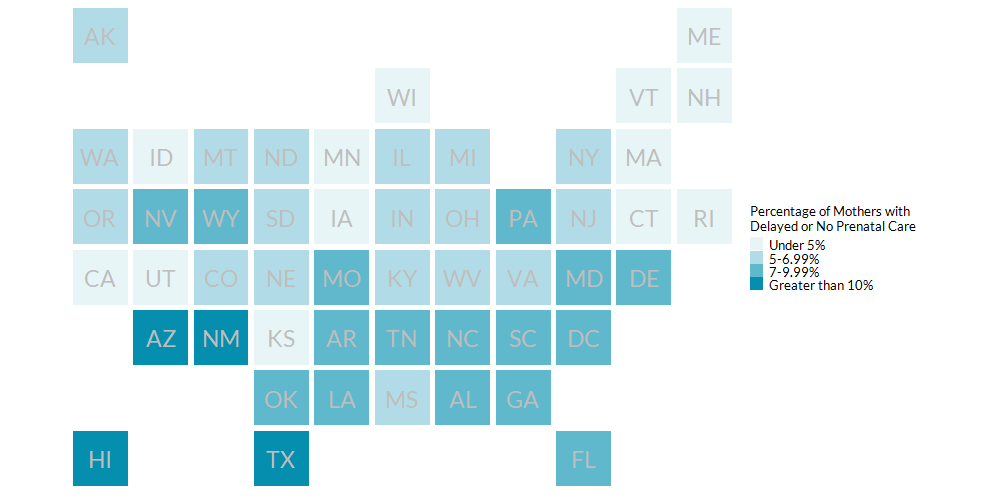
Indicator Data by State
Delayed or No Prenatal Care 2021
Access to prenatal care can help prevent birth complications for infants and mothers, and reduce health care costs. Nationally, 6 percent of expectant mothers had delayed or no prenatal care in 2019, with percentages varying greatly across states and racial/ethnic groups. Not all women have equal access to health care, and structural racism in the health care field can drive differences across racial and ethnic groups. The table below presents data disaggregated by race and ethnicity to help us identify inequities and work toward solutions that promote equity.
Home Visiting as Part of the Solution. Home visitors work with expectant and new mothers to increase access to prenatal care, foster healthy behaviors during pregnancy, and ensure optimal care for infants. Pregnant home visiting participants are more likely to access prenatal care than other pregnant women, and are more likely to carry their babies to term.
Delayed or No Prenatal Care by State, 2019

| State | All Groups | American Indian or Alaska Native | Asian | Black or African American | Hispanic | Native Hawaiian or Other Pacific Islander | Multiple Races | White |
Notes: The original data source reports Hispanic origin separately from race variables; therefore, the population included in each race category does not exclude people of Hispanic origin. NA appears when the data do not meet the criteria for confidentiality constraints. More information can be found at https://wonder.cdc.gov/wonder/help/Natality.html#Assurance%20of%20Confidentiality
Definition: No or delayed prenatal care refers to the percentage of mothers who, on their child’s birth certificate, report not receiving prenatal care before their third trimester or at all in 2019. These percentages exclude births categorized as “not stated,” “not on certificate,” or “excluded” from the total number of births (i.e., the denominator).
Source: U.S. Department of Health and Human Services, Centers for Disease Control and Prevention, National Center for Health Statistics, Division of Vital Statistics. (2018). Natality public-use data 2007-2018 [CDC WONDER Online Database, April 2020]. https://wonder.cdc.gov